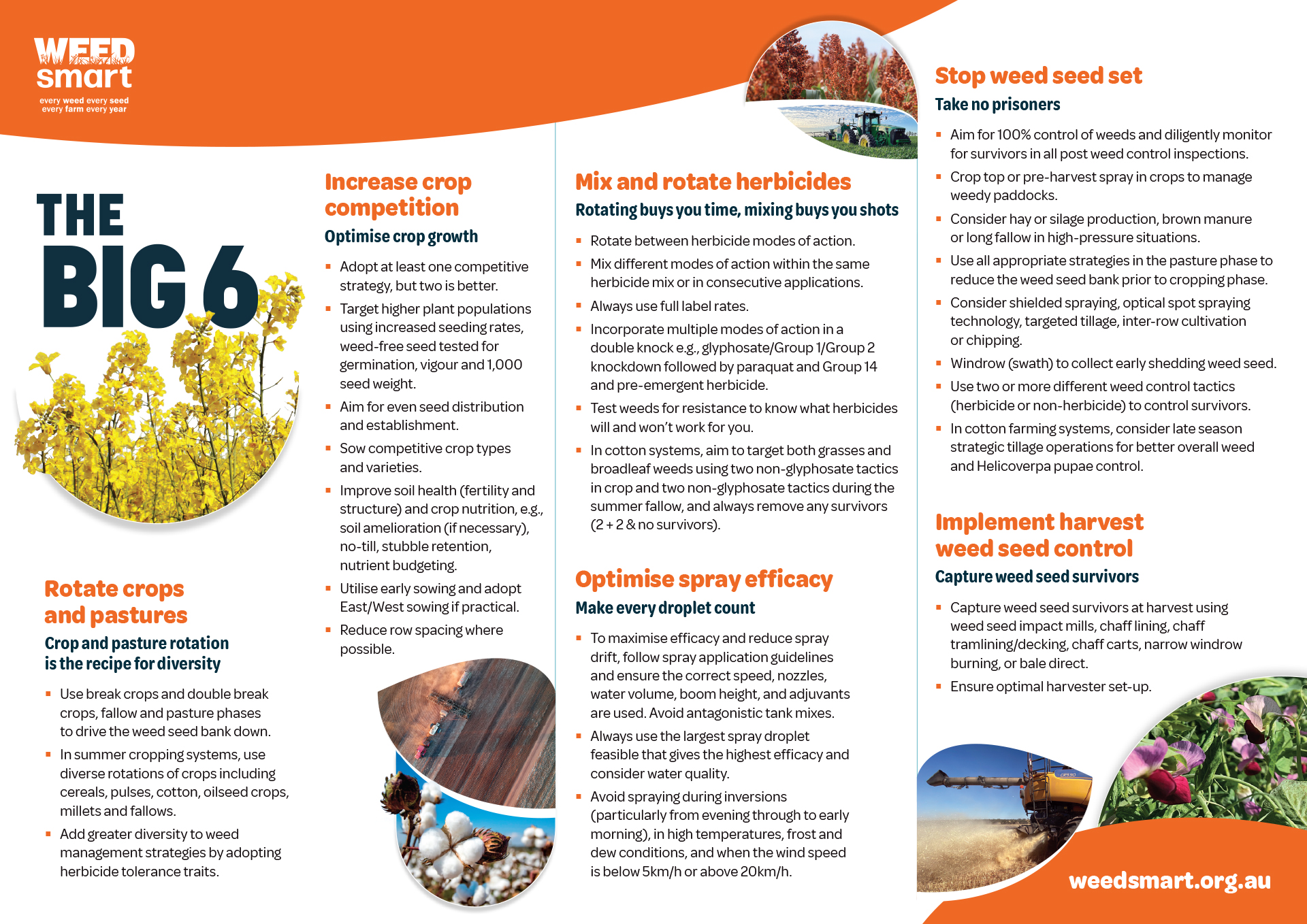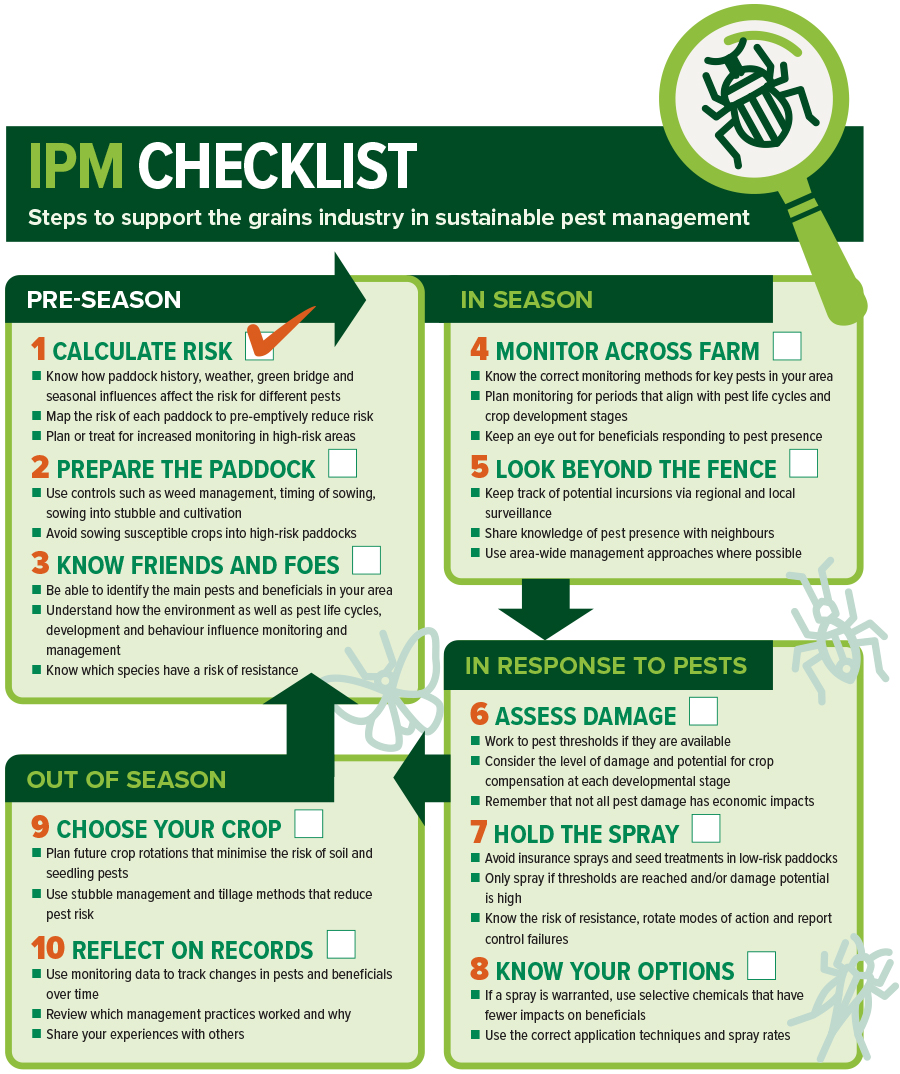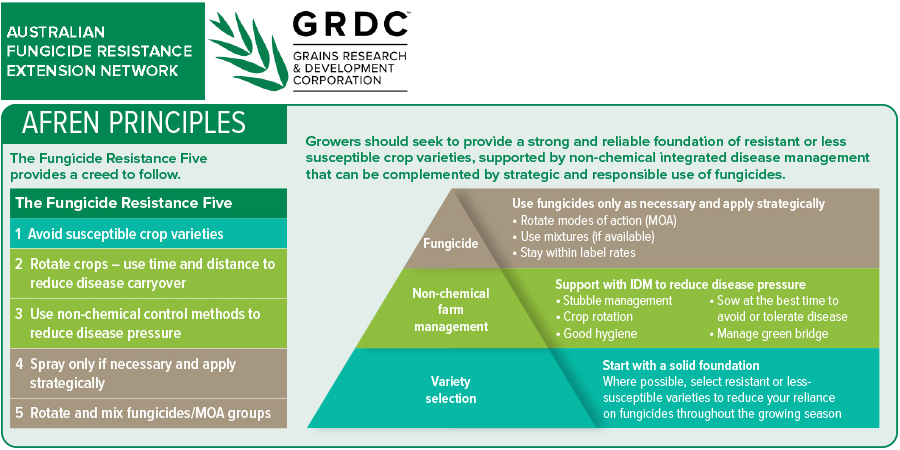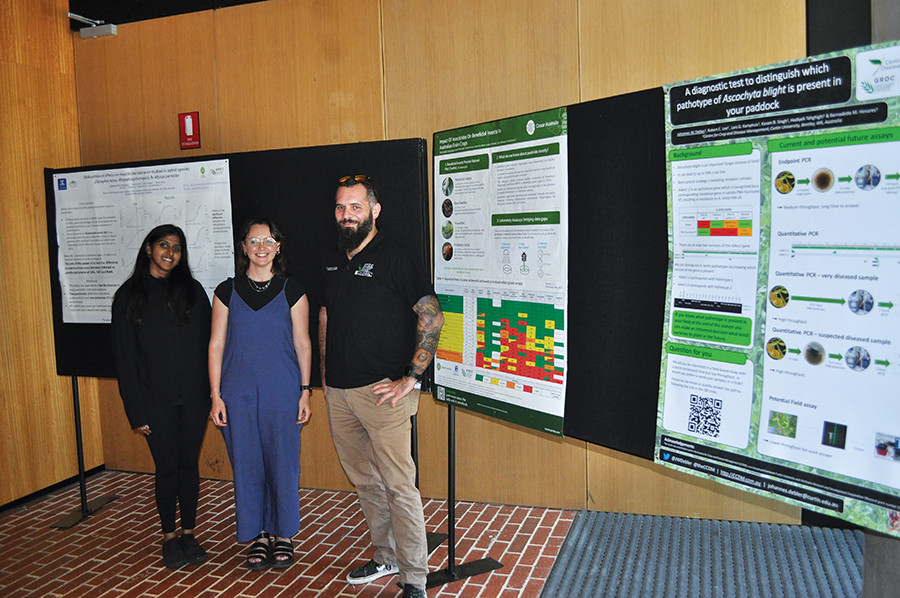Key points
- Knowledge is king when it comes to managing resistant weeds, pests and diseases – do not go it alone, learn from the experts
- Monitor and test – regularly survey to check for changes in responses to management practices of weeds, pests and diseases
- Use an industry endorsed integrated weed/pest/disease management plan
- Maintain and update a diverse toolkit to manage weeds, pests and diseases and deploy as many as possible
As cases of chemical resistance rise in weeds, pests and diseases, there is a growing urgency to develop more in-depth understanding and tools to manage these constraints to crop production.
When it comes to managing a storm, the first step is to be informed about its nature and the next is to have an action plan furnished with state-of-the-art tools.
This was what the December 2023 Crop Protection Forum in Adelaide was all about.
Titled the ‘Storm of Resistance’, the forum brought together 149 Australian and international experts and interested parties focused on mitigating the rising tide of resistance to herbicides, fungicides and insecticides occurring in Australian cropping systems.
In its ninth year, the forum was again supported by the Australian Herbicide Resistance Initiative (AHRI), Cesar Australia and Curtin University’s Centre for Crop and Disease Management, together with GRDC.
Setting the scene
To set the scene, a panel discussion reviewed the season for Yorke Peninsula and the lower mid-north of South Australia. This environmental case study highlighted the need for constant monitoring of seasonal conditions and changes from year to year in weeds, pests and diseases of cropping systems to identify potential resistance issues and update management practices.
Chris Davey from Next Level Agronomy, Jana Dixon from Pinion Advisory and Sam Holmes from Central Ag Solutions presented lessons from their seasons working with clients across SA regions in 2023.
Within these regions lentils are becoming a common rotation crop, which is bringing particular issues to the fore with high weed and disease resistance pressures – notably increases in blue-green aphids and Ascochyta blight infections. Seed destructors are increasingly being used to combat resistant weed burdens. Red-legged earth mites were reported as problematic in pastures.
Following is a summary of information extended during the one-day forum.
Weeds
Update and emerging problems
Professor Chris Preston from the University of Adelaide presented findings from the national 2020-21 herbicide resistance survey using resistance in ryegrass as a case study. This highlighted the growing resistance to pre and post-emergent herbicides. Resistance to Group 1 and 2 post-emergent herbicides continues to grow, as well as to glyphosate.
The main driver of resistance is using the same chemicals and continuous cropping. Growers are encouraged to pay attention to spray droplet size to improve efficacy and to be aware of surviving plants, particularly on fencelines, and to consider using different chemistries in-crop compared to fencelines.
New insights into resistance development and controls
Dr Roberto Busi, from AHRI, reiterated the importance of weed control in fencelines, avoiding using glyphosate. He made the audience aware of impending new herbicide releases for fenceline application.
Professor Paul Neve from the University of Copenhagen, Denmark, presented a case study of the management of black grass (Alopecurus myosuroides) in the UK, a weed species very similar to ryegrass in its response to management practices.
Professor Neve presented findings from an extensive, multi-year and interdisciplinary initiative aimed at unravelling the molecular intricacies and the ecological, evolutionary and agronomic factors influencing a herbicide resistance epidemic in a grass weed.
Working from ‘field to gene’, a network of 70 farms across the UK were accessed to sample black grass seed populations, which were mapped and resistance was characterised at whole-plant and molecular levels.
A unique component of the research was the collection of extensive historical field management records to explore drivers of resistance evolution. The project has demonstrated the value of field epidemiological approaches for dissecting the effects of field and farm management practices on the risks, abundance and mechanisms of resistance to multiple herbicide modes of action in black grass to inform improved management.
Via a virtual presentation, Associate Professor Todd Gaines from Colorado State University discussed how genomics and molecular biology can contribute to improved weed management. Associate Professor Gaines is a lead scientist involved in the International Weed Genomics Consortium (IWGC). The consortium is a public-private collaboration with the vision to 1) develop genomics resources for major weed species; 2) make the data and analysis tools broadly available; and 3) foster networking and training for weed scientists to use genomics tools.
Through the IWGC and collaborating groups, 26 weed species now have high-quality annotated reference genomes. This fundamental information can underpin the development of improved in-field herbicide resistance testing, enable the development of next-generation herbicides and overcome or reverse resistance.
Delivering field solutions
Dr Mike Ashworth from AHRI presented research information on the importance of crop competition as a method of weed control and that a competitive crop should be the basis of a cropping system (see the WeedSmart Big 6). The research has shown management of weeds in canola can be significantly enhanced by cultivating a competitive crop. Dr Ashworth stated that it is important to know the optimal sowing rate for your region.

Insects
Update and emerging problems
Professor Ary Hoffman from the University of Melbourne presented information on resistant pest status, stating that farming systems are complex and management is a challenge, so pest management adds another layer of complexity. Insect mutations can move rapidly in landscapes and monitoring of these changes is key to inform management.
New insights into resistance development and controls
Dr Evatt Chirgwin presented information on the emergence of insecticide-resistant blue-green aphids and the concern that control of this pest is based only on two insecticides. He encouraged the use of more-diverse control methods and use of beneficial insects (see the National Pest Information Network new IPM checklist below).

Delivering field solutions
Dr Luis Mata presented on red-legged earth mites (RLEM) and looked to the similarities across issues pertaining to weeds, insects and diseases.
Inadvertently introduced into Western Australia in 1917, RLEM now number in the top four pests for insecticide resistance, together with diamondback moth, green peach aphid and cotton bollworm. The industry has become heavily reliant on the use of broad-spectrum insecticides for the control of these pests. Resistance was first discovered to pyrethroids in WA in 2006 and to organophosphates in 2014, again in WA.
Dr Mata concluded that, at present, the main lessons for RLEM resistance management are similar to those for weeds and diseases:
- use chemicals strategically;
- rotate insecticide modes of action;
- follow guidelines in the RLEM Resistance Management Strategy; and
- preserve and promote beneficial organisms.
Diseases
Update and emerging problems
The key messages from Associate Professor Fran Lopez-Ruiz at Curtin University’s Centre for Crop and Disease Management (CCDM) were to use the AFREN ‘Fungicide Resistance Five’ integrated management approach to mitigate fungicide resistance. He encouraged attendees to access the New Fungicide Resistance Management Guide.

New insights into resistance development and controls
Dr Tara Garrard from the South Australian Research and Development Institute extended a key message that variety selection is the biggest tool when it comes to managing cereal diseases and is one of the key tools in the AFREN ‘Fungicide Resistance Five’.
Dr Garrard reported that powdery mildews are becoming increasingly challenging to control, as is net form of net blotch in barley. She encouraged reviewing spray timing to spray earlier, before diseases get established, and to test for resistance for multiple modes of action. Again, the message for consistent and regular surveillance was reiterated.
Delivering field solutions
Professor Mark Gibberd, the director of CCDM, informed forum attendees about a new GRDC investment to visualise data pertaining to fungicide resistance spatially across Australia. This tool should allow growers and agronomists to log on, enter a location and get an estimate of the likelihood of fungicide resistance within that area.
Capacity building
The forum also provided an opportunity for early career scientists to present their research in a combined elevator pitch/poster presentation.
 Ashritha Prithiv Sivaji Dorai, Dr Rosie Knapp and Johannes Debler (left to right) field questions about their posters presented at the forum. Photo: Sue Knights
Ashritha Prithiv Sivaji Dorai, Dr Rosie Knapp and Johannes Debler (left to right) field questions about their posters presented at the forum. Photo: Sue Knights
Johannes Debler, CCDM, presented research on developing a diagnostic test assay, similar to the COVID-19 PCR test, for Ascochyta blight in lentils.
Dr Rosie Knapp, from the University of Melbourne, presented a decision aid for growers to identify the impact of different insecticide modes of action on beneficial insects in Australian grain crops.
Ashritha Prithiv Sivaji Dorai, a PhD student at the University of Melbourne, presented work on endosymbiont use as potential biocontrol agents for aphids. She is testing to see if the addition of endosymbionts into aphids, alters chemical tolerance to commonly used insecticides on aphids.
Future use of pesticides
The forum was rounded off by an industry panel discussion looking to the future of weed, insect and disease management with Chris Davey, Associate Professor Neve, Justin Crosby (CropLife Australia), Dr Rick Llewellyn (CSIRO) and Dr Ken Young (GRDC).
Associate Professor Neve shared recent industry developments from Europe and the pressure from governments to reduce herbicide and pesticide usage. Glyphosate use is of growing concern and growers have lost the use of neonicotinoids due to environmental impacts. There is growing interest in the use of biological control agents.
Dr Rick Llewellyn encouraged growers and advisers to think through ‘what if’ scenarios to broaden their use of different control methods, together with considering the importance of pre-emergent herbicides and off-season control. He reinforced the importance of controlling summer weeds and considering the benefit of controlling weeds in fallows. A good fallback measure is weed seed control.
Chris Davey challenged the audience to look for innovations that may be ‘outside the room’ with new thinking and skill sets.
Dr Young emphasised the importance of growers being proactive rather than reactive and continue ongoing monitoring of weeds, insects and diseases to keep abreast of resistance issues. He highlighted the need for new technological approaches such as the weed seed destructor and site-specific management approaches such as green-on-green and green-on-brown technology.
Justin Crosby said Australia is dependent on international supply chains for agricultural chemicals. A united effort is required to demonstrate that Australia is a market of choice for development of new chemistries and technologies. In this respect, Australia is leading the way with stewardship programs for weed, insect and disease tool management, which are fundamental to underpin social license for farming and global competitiveness.
More information: Lisa Mayer, lisa.mayer@uwa.edu.au

























































